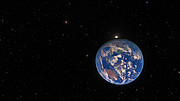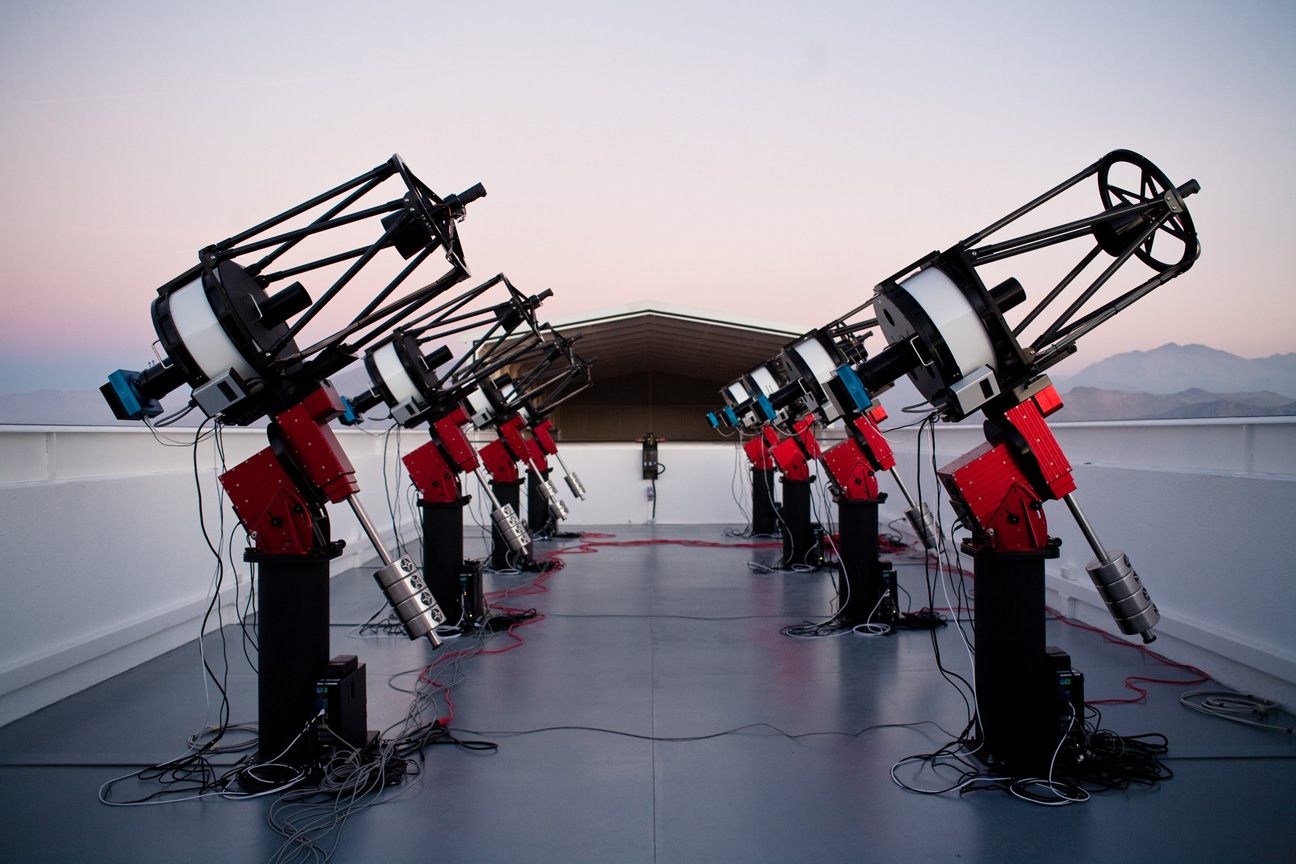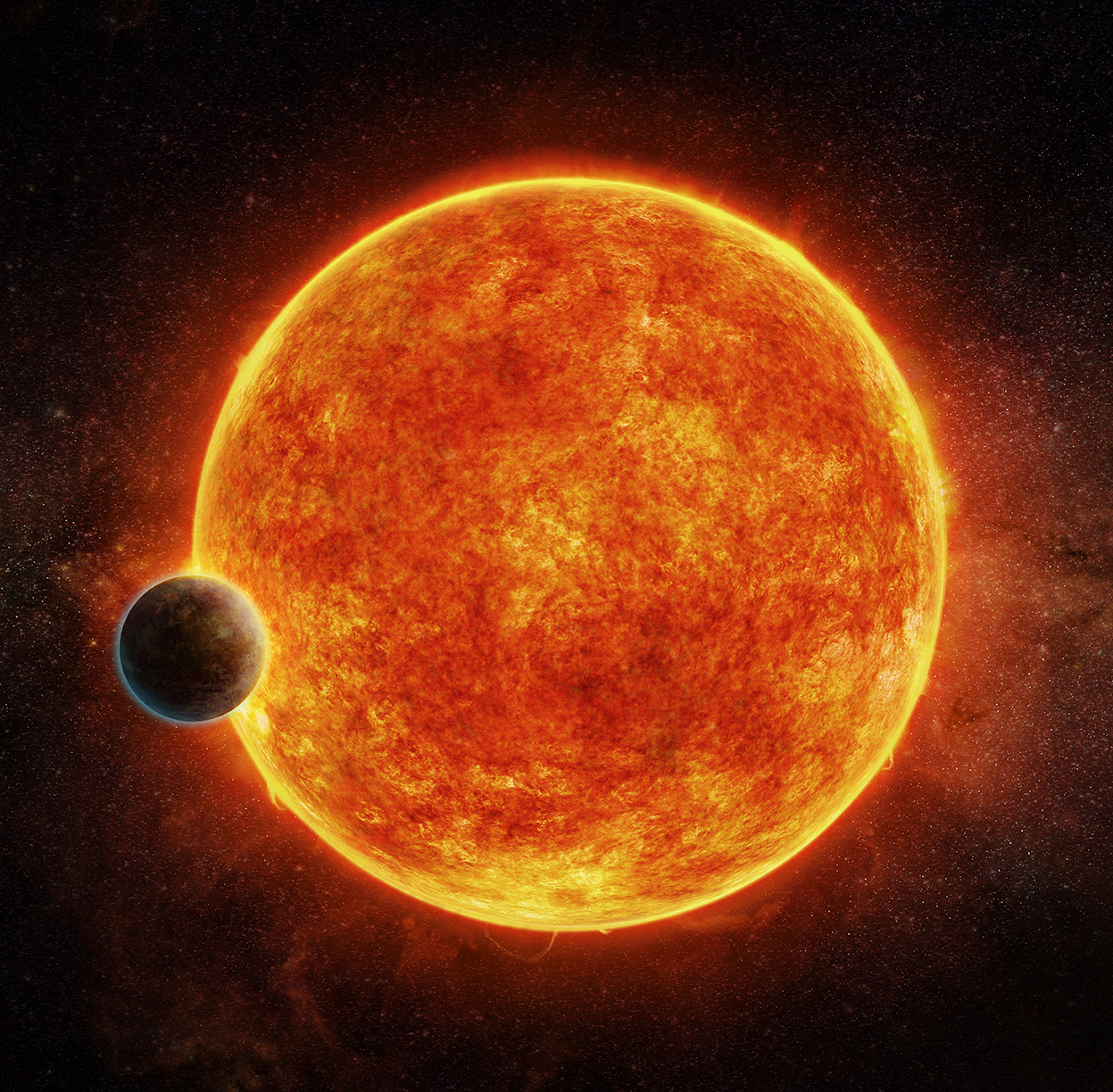Image List
-

This artist's impression video shows an imaginary trip to the exoplanet LHS 1140b, which orbits a red dwarf star 40 light-years from Earth and may be the new holder of the title "best place to look for signs of life beyond the Solar System." Using ESO's HARPS instrument at La Silla, and other telescopes around the world, an international team of astronomers discovered this super-Earth orbiting in the habitable zone around the faint star LHS 1140. This world is a little larger and much more massive than the Earth and has likely retained most of its atmosphere.
ESO/spaceengine.org -

The MEarth-South telescope array, located on Cerro Tololo in Chile, searches for planets by monitoring the brightness of nearby, small stars. This photograph shows the array, comprising eight 40-cm telescopes, at twilight. (The MEarth team grants unrestricted permission for reuse and redistribution of this image.)
Jonathan Irwin -

An artist's impression of the newly-discovered rocky exoplanet, LHS 1140b. This planet is located in the liquid water habitable zone surrounding its host star, a small, faint red star named LHS 1140. The planet weighs about 6.6 times the mass of Earth and is shown passing in front of LHS 1140. Depicted in blue is the atmosphere the planet may have retained.
M. Weiss/CfA